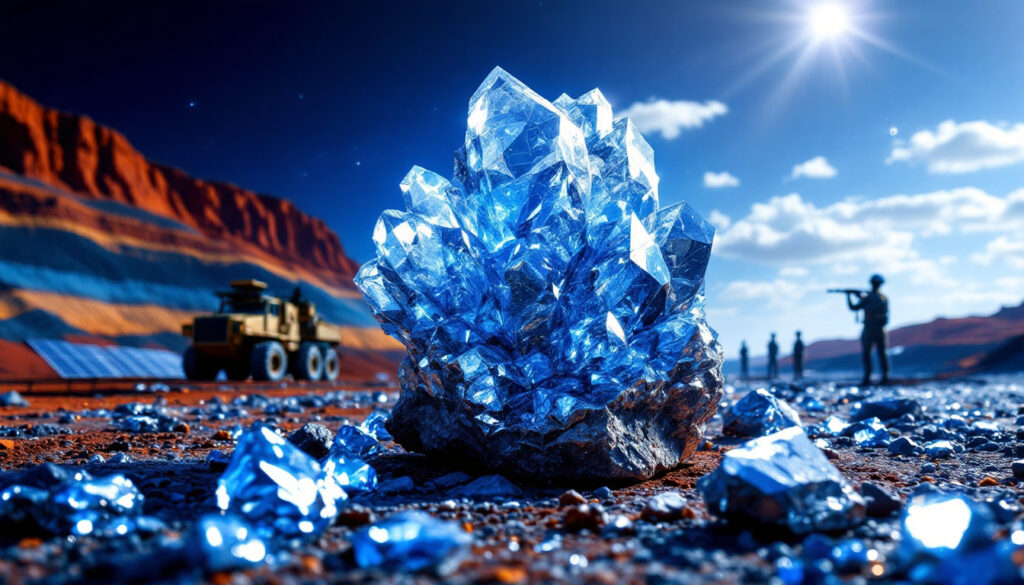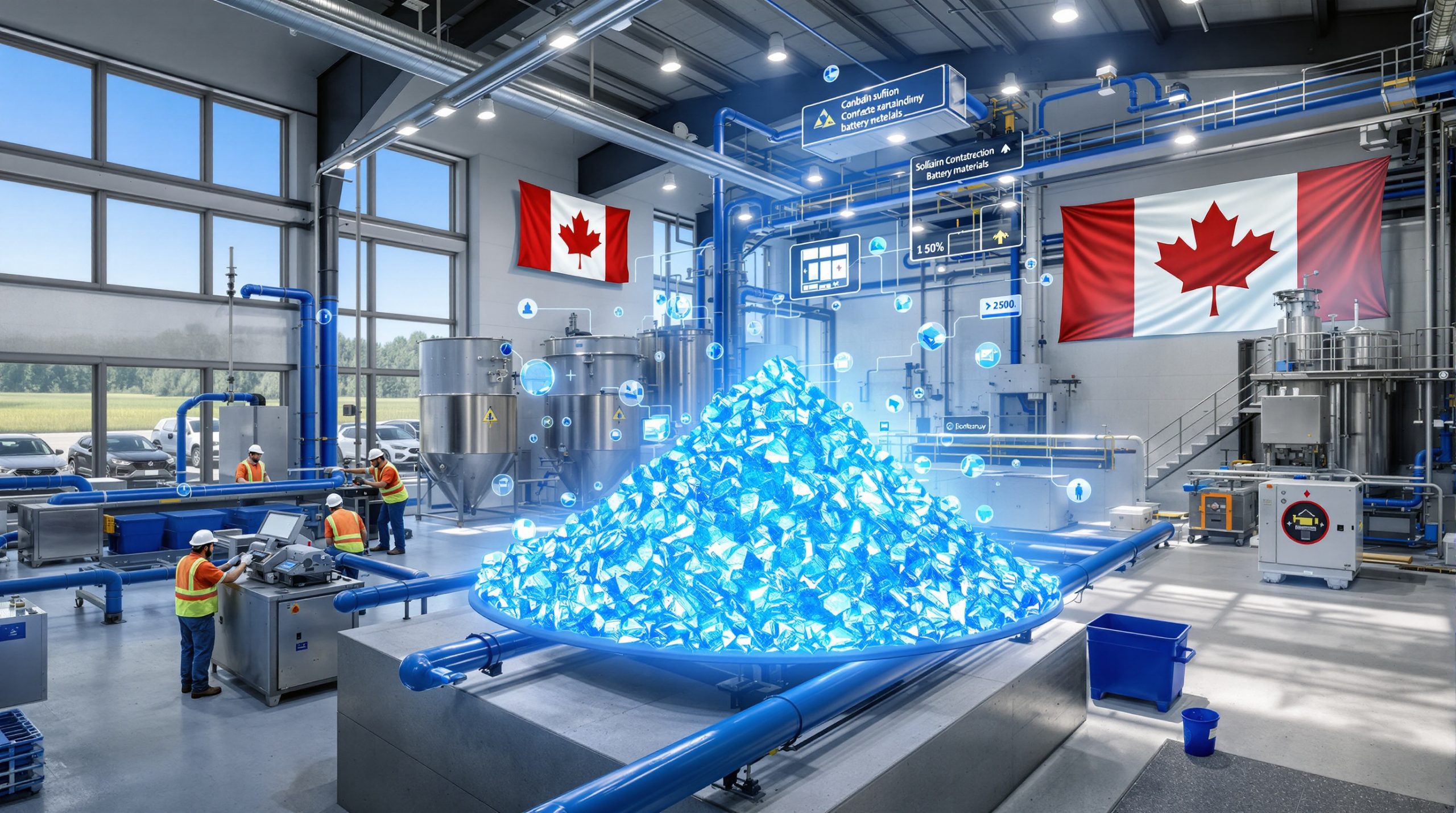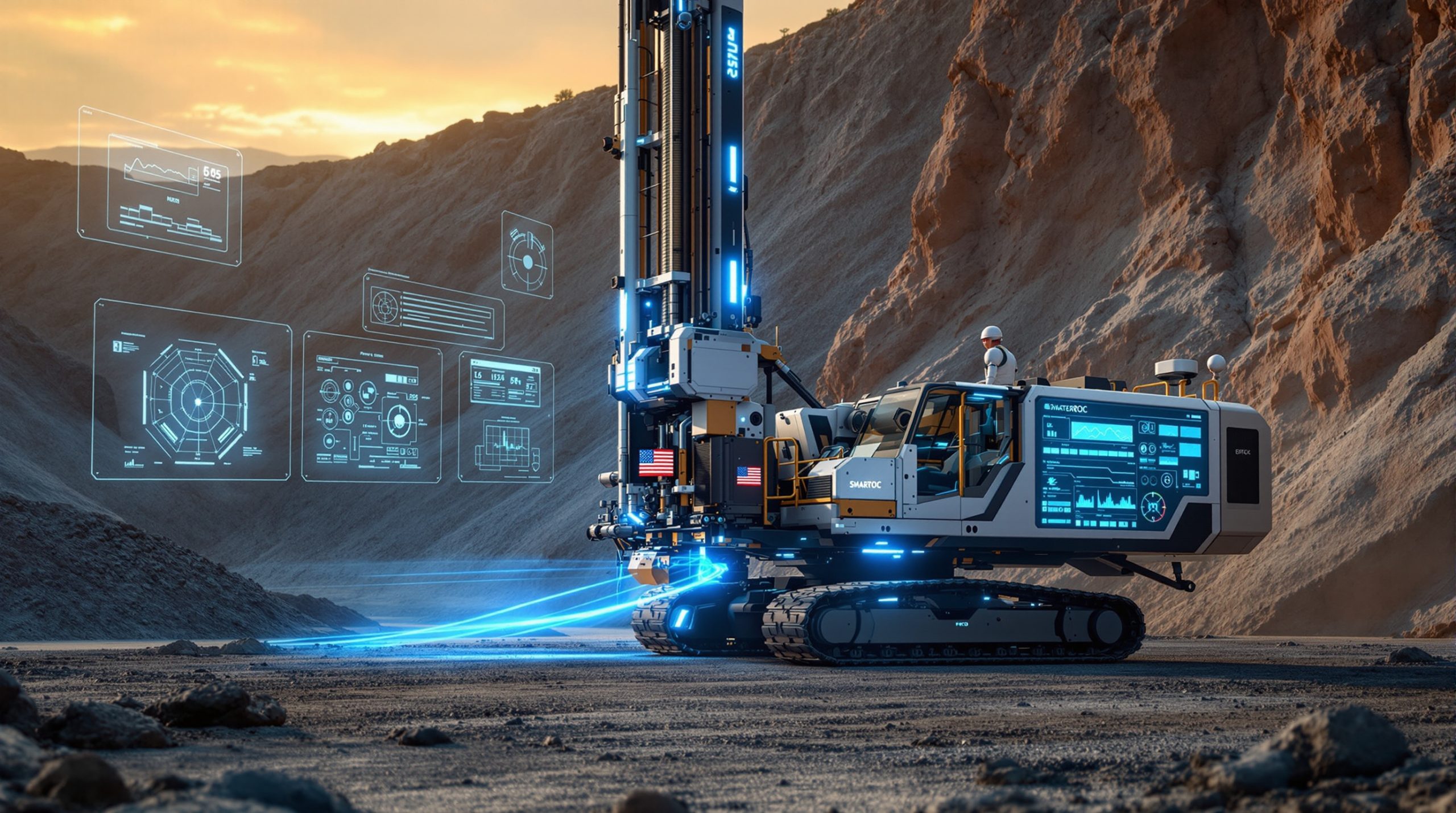What is the Significance of Warriedar's New Antimony Resource?
Warriedar Resources (ASX: WA8) has established what appears to be Australia's largest open-pit antimony resource at its Ricciardo deposit in Western Australia. The maiden antimony mineral resource estimate (MRE) of 12.2 million tonnes at 0.5% antimony represents a significant strategic discovery in the critical minerals space, particularly as global supply chains face unprecedented pressure.
The timing of this discovery is especially noteworthy, coinciding with a dramatic surge in antimony prices. Since early 2024, antimony has skyrocketed by over 300%, climbing from approximately $19,000 per tonne to around $78,000 per tonne by mid-2025. This price explosion reflects intensifying supply constraints as China—which controls roughly 60% of global antimony production—has implemented strict export restrictions on this increasingly vital mineral.
The discovery has substantially enhanced Warriedar's overall project economics, driving a 107% increase in the total project mineral resource to 1.96 million ounces of gold equivalent at an average grade of 2.5 grams per tonne. The open-pit component of the MRE stands at 11.4 million tonnes at 3.3g/t gold equivalent, positioning the company favorably for potential future development.
"Through diligent evaluation of historical data and strategic exploration, we've defined what we believe to be Australia's largest open-pit antimony resource at a time when global markets are experiencing unprecedented price movements and supply challenges," said Amanda Buckingham, CEO of Warriedar Resources.
The discovery's significance extends beyond mere tonnage figures, as it represents a potential new domestic source of a mineral deemed critical by the Australian government, the European Union, and the United States. With antimony playing an increasingly essential role in both renewable energy transitions and defense applications, the Ricciardo deposit could become strategically important to Western supply chains seeking alternatives to Chinese dominance.
How Did Warriedar Uncover This Significant Antimony Resource?
Warriedar's discovery of the substantial antimony resource at the Ricciardo deposit came through a methodical reexamination of historical data rather than an entirely new exploration effort. Despite the deposit being known since the 1990s, its antimony potential remained largely unrecognized until Warriedar's comprehensive reassessment.
The breakthrough came during the company's 2024 drilling campaign, when geologists identified unexpectedly high-grade antimony intervals in several holes. This prompted a systematic review of historical drill core and data that had previously been evaluated primarily for gold content.
Methodical Technical Analysis
The company's technical team followed a comprehensive multi-step process:
- Detailed core sample review – Examining archived drill core with fresh eyes focused on antimony mineralization
- Metallurgical testing – Specialized testing of core samples revealed significant recoverable antimony
- Historical pulp sample reanalysis – Testing stored pulp samples specifically for antimony content
- Mineral identification – Confirmation of primary antimony minerals including stibnite (Sb₂S₃) and berthierite (FeSb₂S₄)
- Flotation testwork – Processing trials producing high-grade concentrates of approximately 49% antimony
"What makes this discovery particularly interesting is that the antimony potential remained largely unrecognized until our 2024 campaign highlighted these high-grade intervals," noted Buckingham. "It demonstrates the value of fresh perspectives when evaluating historical projects."
This meticulous approach to data reinterpretation exemplifies how mining companies can sometimes unlock significant additional value from existing assets through systematic reevaluation using modern analytical techniques and mining feasibility insights.
Why is Antimony Becoming a Critical Strategic Mineral?
The dramatic quadrupling of antimony prices since early 2024 highlights the mineral's rapidly evolving status from an industrial commodity to a strategic resource. This transformation stems from a complex interplay of supply constraints, geopolitical tensions, and expanding technological applications.
Expanding Applications in Modern Technology
Antimony's criticality derives from its increasingly diverse applications:
- Renewable energy infrastructure – Crucial component in 85% of photovoltaic glass used in solar panels
- Defense industry – Essential for ammunition production, infrared devices, and night-vision technology
- Flame retardants – Required in building materials, electronics, and transportation safety systems
- Battery technology – Used in lead-acid batteries and certain emerging grid storage solutions
- Semiconductor manufacturing – Component in certain specialized electronics production
Supply Chain Vulnerabilities
The global antimony supply chain faces multiple vulnerability points:
- China dominates global production with approximately 60% market share
- Chinese export restrictions have tightened significantly since late 2023
- Limited production in Western-aligned nations creates strategic vulnerabilities
- Few advanced antimony projects exist in politically stable jurisdictions
- Historical underinvestment has limited new supply development
"Antimony's classification as a critical mineral by Australia, the United States, and the European Union reflects growing recognition of its strategic importance and supply vulnerability," explained a recent industry report from CRU Group.
These factors have created a perfect storm for antimony market insights, with analysts suggesting the current tight market conditions could persist for several years until new production capacity can be developed outside China. This supply-demand imbalance creates significant opportunities for projects like Warriedar's Ricciardo deposit, which could potentially become a cornerstone of Western antimony supply security.
What is the Golden Range Project's Development History?
The Ricciardo deposit sits within Warriedar's broader Golden Range project, an established gold mining district with significant historical production. Located approximately 300 kilometers east of Geraldton in Western Australia, the project area has a rich mining heritage dating back decades.
From Discovery to Production
The development timeline of the broader project area spans more than three decades:
- Early 1990s: Initial discovery of the Ricciardo gold deposit through regional exploration
- 2001: Commencement of open-pit mining targeting shallow oxide gold resources
- 2001-2019: Continuous production period yielding over 300,000 ounces of gold
- August 2019: Operations placed on care and maintenance due to declining gold grades
- 2023: Warriedar acquires 100% ownership of the mining leases
- 2024-2025: Expanded exploration identifies significant antimony potential
The project benefits from substantial existing infrastructure, including haul roads, water licenses, and most importantly, the Golden Range mill facility located approximately 8 kilometers north of the Ricciardo deposit.
Strategic Location Advantages
The Golden Range project occupies a geologically favorable position along what the company refers to as the "Golden Corridor"—a highly prospective 25-kilometer-long structural zone hosting multiple historic mines and deposits.
This established mining district offers several advantages:
- Existing understanding of regional geology and mineralization styles
- Comprehensive historical drilling database exceeding 5,000 holes
- Well-developed local infrastructure including power, water, and road access
- Mining-friendly jurisdiction with streamlined permitting processes
- Operational knowledge base from previous mining activities
"The project's historical gold production of over 300,000 ounces demonstrates the area's mineral endowment, while the recent antimony discovery showcases the potential for additional value creation through comprehensive reevaluation," noted company documents filed with the ASX.
The project's transition from a care-and-maintenance gold operation to a potential dual gold-antimony producer represents an interesting case study in how changing market conditions and fresh technical perspectives can transform a project's economic profile, particularly in light of current gold market analysis.
What Are Warriedar's Next Development Steps?
Following the announcement of the maiden antimony resource, Warriedar has outlined an ambitious development strategy aimed at rapidly advancing the Ricciardo deposit. This multi-faceted approach focuses on both expanding the resource base and defining processing pathways for the antimony mineralization.
Dedicated Exploration Program
According to CEO Amanda Buckingham, the company plans to launch its first-ever dedicated antimony drilling program at Ricciardo, with drilling scheduled to commence in the second half of 2025. This focused exploration effort will aim to:
- Expand the known antimony resource laterally and at depth
- Upgrade inferred resources to indicated status to support future mining studies
- Test additional antimony targets identified through historical data review
- Define high-grade zones that could potentially support early production scenarios
"We're planning parallel work streams to advance both the antimony potential and our existing gold resources throughout the Golden Corridor," Buckingham stated. "This two-pronged approach ensures we maintain momentum across the entire project while capitalizing on the significant antimony opportunity."
Metallurgical and Processing Advancement
Alongside exploration, Warriedar has initiated comprehensive metallurgical testing to optimize processing options for the antimony mineralization, including:
- Advanced flotation testwork – Optimizing concentrate grades and recoveries
- Processing flow-sheet development – Designing efficient extraction methods
- Concentrate quality assessment – Ensuring marketable antimony products
- Gold-antimony recovery synergies – Maximizing value from both commodities
- Environmental studies – Addressing specific considerations for antimony processing
The company's systematic approach follows the standard mining development pathway:
- Scoping study (targeted for Q1 2026)
- Pre-feasibility study (projected for 2026-2027)
- Definitive feasibility study (potentially 2027-2028)
This methodical progression aims to de-risk the project while maximizing the opportunity presented by current high antimony prices. The existing infrastructure at Golden Range, including the processing mill, could potentially accelerate development timelines compared to greenfield projects.
How Does This Discovery Compare to Other Critical Mineral Projects?
Warriedar's antimony resource announcement positions the company among a select group of ASX-listed miners developing critical mineral assets outside traditional supply chains. When compared to peers, several distinctive factors emerge that differentiate the Ricciardo deposit from other critical mineral projects.
Competitive Landscape Analysis
The Australian critical minerals sector includes several comparable projects:
| Company | Project | Resource | Status | Key Differentiator |
|---|---|---|---|---|
| Warriedar Resources | Ricciardo | 12.2Mt @ 0.5% Sb | Resource stage | Dual Au-Sb commodity, existing infrastructure |
| Red River Resources | Hillgrove | 1.2Mt @ 1.3% Sb | Care & maintenance | Higher grade, underground mine |
| King Island Scheelite | Dolphin | Tungsten focus | Development | Different critical mineral focus |
| Dart Mining | Mt Unicorn | Exploration stage | Early exploration | Earlier stage, higher risk |
This comparative positioning highlights Warriedar's unique market niche, with a market capitalization of approximately $150 million compared to Red River's $220 million, despite the earlier stage development status of the antimony component.
Strategic Competitive Advantages
The project offers several distinct advantages when compared to other critical mineral developments:
- Dual-commodity potential provides natural hedging against price volatility in either gold or antimony
- Existing processing infrastructure reduces capital requirements compared to greenfield developments
- Open-pit configuration suggests favorable mining economics compared to underground operations
- Location in mining-friendly Western Australia reduces permitting and sovereign risk
- Established mining district with comprehensive geological understanding and infrastructure
"Dual-commodity projects typically enjoy enhanced resilience against market volatility, with the ability to optimize production toward the mineral commanding higher margins at any given time," noted a recent Canaccord analyst report on the sector.
These differentiating factors could position Warriedar favorably for potential strategic partnerships or offtake agreements with Western governments or manufacturers seeking to secure antimony supply chains outside of Chinese influence, potentially benefiting from Australia's pursuit of critical minerals leadership.
What Are the Technical Aspects of Antimony Processing?
Warriedar's initial metallurgical test work has revealed important processing characteristics for the antimony mineralization at Ricciardo. Understanding these technical aspects is crucial for evaluating the project's development potential and economic viability.
Mineralogical Characteristics
The antimony mineralization at Ricciardo displays several key features:
- Primary antimony minerals: Predominantly stibnite (Sb₂S₃) and berthierite (FeSb₂S₄)
- Mineral associations: Common association with pyrite and arsenopyrite
- Grain size distribution: Relatively coarse-grained antimony minerals that respond well to conventional processing
- Presence of gold: Often occurs in close proximity to antimony minerals
- Sulfide matrix: Primarily hosted within sulfide assemblages
These mineralogical characteristics have significant implications for processing approaches, with preliminary testing showing promising results for conventional flotation techniques.
Processing Pathway Development
Warriedar's initial metallurgical testing has focused on establishing viable processing routes:
- Flotation performance – Tests have achieved concentrate grades of approximately 49% antimony with recoveries of 85% using standard flotation cells
- Grind size optimization – Testing various grind sizes to maximize liberation while minimizing energy consumption
- Reagent regimes – Evaluating different collector and depressant combinations for optimal selectivity
- Concentrate quality – Assessing impurity levels including arsenic, lead, and mercury to ensure marketable products
- Gold recovery options – Investigating sequential or parallel processing for gold extraction
"Stibnite responds well to conventional flotation methods, which simplifies the processing requirements compared to more complex antimony minerals," according to the metallurgical report from ALS Global testing facility.
Future Processing Considerations
As the project advances, several technical considerations will require detailed evaluation:
- Concentrate marketing options – Direct sale vs. further refining to antimony metal
- Deleterious elements management – Particularly arsenic levels in concentrate
- Environmental considerations – Specialized tailings management for antimony processing
- Water management – Recycling requirements and discharge quality standards
- Processing scale – Optimal throughput balancing grade, recovery, and capital efficiency
The existing Golden Range mill would require modifications to accommodate antimony processing, but the presence of established infrastructure provides significant advantages compared to developing a completely new processing facility.
FAQ: Warriedar Resources' Antimony Discovery
What makes antimony a critical mineral?
Antimony has been classified as a critical mineral by the governments of Australia, the United States, and the European Union due to its essential applications and supply vulnerability. It serves crucial functions in defense technology (infrared detection, night vision), flame retardants for building materials and electronics, lead-acid batteries, and increasingly in renewable energy infrastructure, particularly solar panels. The supply chain vulnerability stems from China controlling approximately 60% of global production, with significant export restrictions implemented since late 2023.
How does Warriedar's antimony resource compare globally?
While Warriedar Resources unveiled promising antimony assay results and claims to have Australia's largest open-pit antimony resource, the global context is important for perspective. China's Xikuangshan mine contains grades averaging 2.5% antimony compared to Ricciardo's 0.5%, while Russia's Sarylakh deposit contains higher-grade underground resources. However, the strategic value of Warriedar's discovery lies less in its size than in its location within a stable Western jurisdiction and its open-pit nature, which typically offers more favorable economics than underground operations. According to USGS data, global antimony reserves are concentrated in China (47%), Russia (19%), and Bolivia (12%), highlighting the importance of developing alternative supply sources.
What are the potential economic implications of the dual gold-antimony resource?
The dual-commodity nature of the Ricciardo deposit potentially provides significant economic advantages through:
- Revenue diversification – Reducing exposure to price volatility in either commodity
- Operational flexibility – Ability to prioritize extraction based on prevailing prices
- Shared infrastructure costs – Spreading capital and operating expenses across two products
- Enhanced project economics – Potentially improving overall returns compared to single-commodity operations
- Strategic positioning – Attracting potential premium pricing through offtake agreements with security-conscious buyers
As the Western Australia Department of Jobs noted in a recent report: "Dual-commodity projects typically demonstrate enhanced resilience to market cycles, potentially reducing project risk and improving bankability."
What regulatory approvals would be required for antimony production?
Antimony production at Ricciardo would require several key regulatory approvals under Western Australian regulations:
- Mining Proposal under the Mining Act 1978 (WA)
- Works Approval from the Department of Water and Environmental Regulation
- Native Vegetation Clearing Permit (if additional clearing beyond existing disturbance is required)
- Groundwater License amendments for any changes to water extraction
- **Dangerous Goods Licenses
Interested in Investing in the Next Major Mineral Discovery?
Discover significant ASX mineral discoveries as they happen with Discovery Alert's proprietary Discovery IQ model, transforming complex geological data into actionable investment insights. Visit our dedicated discoveries page to understand how major mineral findings like Warriedar's antimony resource can generate substantial returns for early investors.




